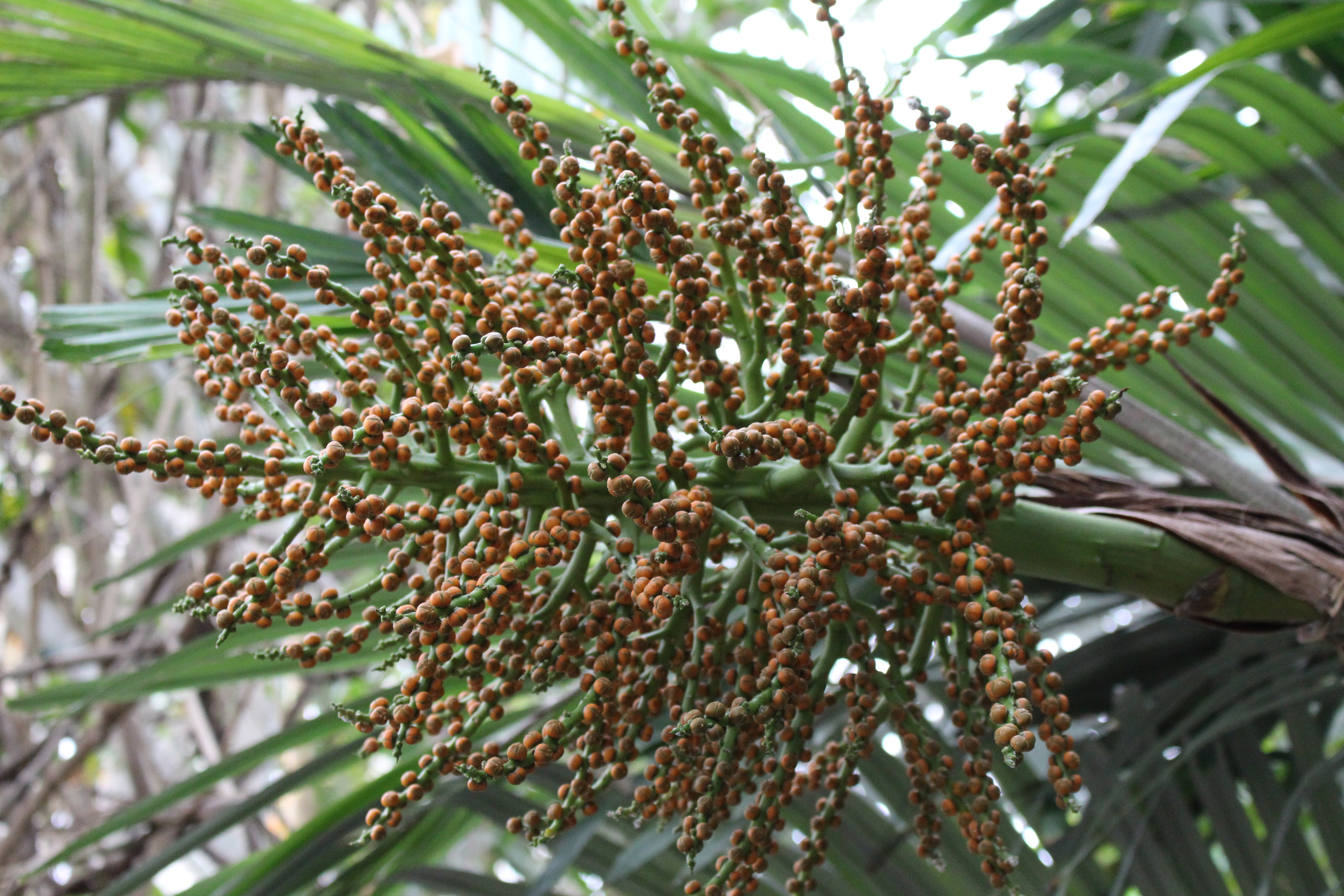Arenga Engleri on:
[Wikipedia]
[Google]
[Amazon]
 ''Arenga engleri'', or the Formosa palm, Taiwan sugar palm, dwarf sugar palm, or Taiwan arenga palm, is a species of
''Arenga engleri'', or the Formosa palm, Taiwan sugar palm, dwarf sugar palm, or Taiwan arenga palm, is a species of
File:山棕Arenga engleri 20210512173507 01.jpg, Female flower bud.
File:山棕 - 溪頭自然教育園區 Arenga engleri - Xitou Nature Education Area, Taiwan 20220628191832.jpg, Male flower bud.
File:山棕Arenga engleri 20210512173507 04.jpg, Bracts are covered with fibers.
File:山棕Arenga engleri 20210512173507 10.jpg, Bracts (Buds are edible).
File:山棕Arenga engleri 20210512173507 12.jpg, Wilted flowers remain on the stem.
File:山棕Arenga engleri 20210512173507 13.jpg, Ripe fruits are black in color and edible.
File:山棕Arenga engleri 20210512173507 16.jpg, Leaflets with serrated margin.
File:山棕Arenga engleri 20210512173507 19.jpg, The fiber can be used to make brooms and brushes.
 ''Arenga engleri'', or the Formosa palm, Taiwan sugar palm, dwarf sugar palm, or Taiwan arenga palm, is a species of
''Arenga engleri'', or the Formosa palm, Taiwan sugar palm, dwarf sugar palm, or Taiwan arenga palm, is a species of flowering plant
Flowering plants are plants that bear flowers and fruits, and form the clade Angiospermae (). The term angiosperm is derived from the Ancient Greek, Greek words (; 'container, vessel') and (; 'seed'), meaning that the seeds are enclosed with ...
in the family Arecaceae
The Arecaceae () is a family (biology), family of perennial plant, perennial, flowering plants in the Monocotyledon, monocot order Arecales. Their growth form can be climbing palm, climbers, shrubs, tree-like and stemless plants, all commonly k ...
. The plant rarely grows more than 10 ft. tall, with a stem diameter of 6in. and a spread of 16 ft. The palm is native to Taiwan as well as Japan's Ryukyu Islands
The , also known as the or the , are a chain of Japanese islands that stretch southwest from Kyushu to Geography of Taiwan, Taiwan: the Ryukyu Islands are divided into the Satsunan Islands (Ōsumi Islands, Ōsumi, Tokara Islands, Tokara and A ...
. The fruit of the palm is known to cause a severe allergic reaction.
Description
''Arenga engleri'', is a striking tropicalspecies
A species () is often defined as the largest group of organisms in which any two individuals of the appropriate sexes or mating types can produce fertile offspring, typically by sexual reproduction. It is the basic unit of Taxonomy (biology), ...
admired for its ornamental appeal. This clustering palm
Palm most commonly refers to:
* Palm of the hand, the central region of the front of the hand
* Palm plants, of family Arecaceae
** List of Arecaceae genera
**Palm oil
* Several other plants known as "palm"
Palm or Palms may also refer to:
Music ...
features multiple stems enveloped in fine black fibers
Fiber (spelled fibre in British English; from ) is a natural or artificial substance that is significantly longer than it is wide. Fibers are often used in the manufacture of other materials. The strongest engineering materials often inco ...
, adding to its distinctive appearance.
Its lush, arching leaves have a characteristic fishtail shape. The deep green, pinnate
Pinnation (also called pennation) is the arrangement of feather-like or multi-divided features arising from both sides of a common axis. Pinnation occurs in biological morphology, in crystals, such as some forms of ice or metal crystals, and ...
leaflets often exhibit a gentle twist, creating a slightly spiraled effect. Each leaflet emerges from a thornless midrib
A primary vein, also known as the midrib, is the main vascular structure running through the center of a leaf. The primary vein is crucial for the leaf’s efficiency in photosynthesis and overall health, as it ensures the proper flow of material ...
, displaying a dark-green to olive hue on the upper surface and a silvery sheen underneath. Notably, the leaflets have a unique induplicate cross-section and are arranged in a single plane along the stem.
Among the foliage
A leaf (: leaves) is a principal appendage of the stem of a vascular plant, usually borne laterally above ground and specialized for photosynthesis. Leaves are collectively called foliage, as in "autumn foliage", while the leaves, stem, f ...
, the palm produces spikelike inflorescences
In botany, an inflorescence is a group or cluster of flowers arranged on a plant's stem that is composed of a main branch or a system of branches. An inflorescence is categorized on the basis of the arrangement of flowers on a main axis ( pe ...
containing both male and female flowers
Flowers, also known as blooms and blossoms, are the reproductive structures of flowering plants ( angiosperms). Typically, they are structured in four circular levels, called whorls, around the end of a stalk. These whorls include: calyx, m ...
, allowing for self-pollination
Self-pollination is a form of pollination in which pollen arrives at the stigma of a flower (in flowering plants) or at the ovule (in gymnosperms) of the same plant. The term cross-pollination is used for the opposite case, where pollen from ...
. These blossoms, available in shades of red, orange, or green, emit a pleasant fragrance. The plant eventually bears small, spherical fruits
In botany, a fruit is the seed-bearing structure in flowering plants (angiosperms) that is formed from the ovary after flowering.
Fruits are the means by which angiosperms disseminate their seeds. Edible fruits in particular have long propaga ...
that mature to a deep red or purple color, each containing one to three seeds
In botany, a seed is a plant structure containing an embryo and stored nutrients in a protective coat called a ''testa''. More generally, the term "seed" means anything that can be sown, which may include seed and husk or tuber. Seeds are the ...
.
Gallery
References
{{Taxonbar, from=Q11045924 engleri Endemic flora of Taiwan Taxa named by Odoardo Beccari